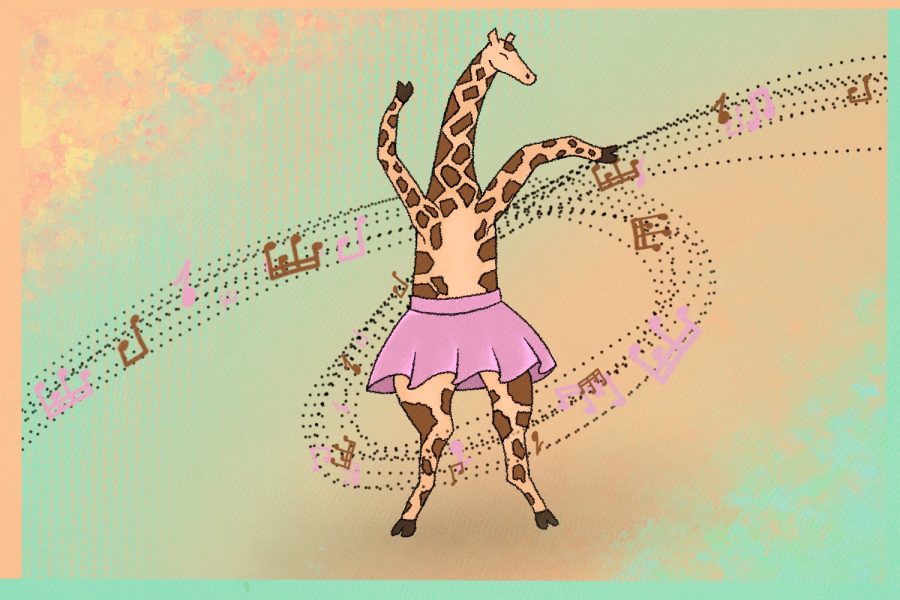My name is Grace and I love to dance, here’s why you should too
October 20, 2022
It’s no secret I love to dance.
As a dance minor, I spend Monday through Friday breaking it down in Cohen Hall and in the Mann Hall Gym during my dance classes.
On the weekends, you can find me forcing my friends into a dance circle as the Black Eyed Peas’ “I Gotta Feeling” and LMFAO’s “Party Rock Anthem” blast in the background of my small, overpriced apartment.
I don’t dance just because it’s fun. I dance because it challenges me, heals me and has shown me how to connect with people in a special way.
Dancing boosts cognitive function and exercises your brain, according to a May 10, 2019 Healthline article.
Many forms of dance require you to focus on changing patterns while recalling moves. For some, this might mean accessing a part of the brain that is otherwise less frequently used.
My dance career started a little later in life than it does for some—I started dancing when I was 11. I took classes at a local studio through the middle of high school but dropped it once I got too busy with other activities.
I always just danced for fun. I never competed or thought of myself as “good.” I made my return to the dance floor last year, as a sophomore in college, ready to learn and grow.
Because I have less experience than many of the people I dance with, I often take longer to pick up choreography and master new techniques. Sometimes it’s scary to be the least-skilled in the room, but I am getting a great cognitive boost by being pushed out of my comfort zone.
Every day I can feel myself getting the hang of things more easily. It’s rewarding when I perfect a new move or understand the choreography quicker than I did last time.
Dancing is also beneficial for its ability to reduce stress and increase serotonin levels, according to a 2015 Harvard Medical School article.
Last semester, I took an 8:30 a.m. dance class. Waking up and hauling my butt to Cohen Hall a mile away from my dorm in the frigid Vermont winter was not something I looked forward to. I dreaded getting up and going more days than not.
However, everyday I left the class feeling happy and excited for the rest of my day ahead. Though early in the morning, the class served as a great way to decompress and relieve any jitters I had before I went to my other classes.
In addition to its benefits for cognition and exercise, dancing forms a connection with the emotional centers of the brain, according to a Jan. 29, 2021 VICE article.
Dancing is cathartic. It allows people to let go of what they are holding onto, whether it be emotions that are happy or sad, according to the VICE article.
When I began my UVM dance career, I was in a horrible emotional place. I was holding on to more trauma and sadness than my five-foot tall body could handle.
So I danced it out.
I learned to express myself through movement in a way my words couldn’t. Dancing let me take back my body and connect with myself in an intimate way I didn’t know I was capable of.
One of my favorite parts of dancing is the cultural and social aspect.
Dancing with others in a group setting is an effective group bonding activity, according to an October 2015 study from Biology Letters.
Dancing fosters an amazing basis for connection. I gained a whole new friend group from dancing at UVM. The people I dance with have become a second family to me. My dance classes are filled with the kindest and silliest humans who take risks and aren’t afraid to fail.
When I walk into the studio, I know I am stepping into a positive and accepting place.
Dancing connects people beyond a typical classroom environment. Whether you’re busting out a move at a party or grooving in a club, dancing is a fun way to relate to others.
I was recently at a club in Montréal that had Rihanna’s “Wild Thoughts” booming on the speakers. As I was boogieing my way to the bathroom, I stopped and shared a brief 30-second dance with someone.
We weren’t together for long and we didn’t even exchange names, but that moment was so humanizing. There were no distractions, just pure happiness and connection.
Dancing is vulnerable. It’s intimate to let someone connect with you in that way. You don’t need to be a professional ballerina or be part of a super cool hip-hop crew to be a dancer. We’re all dancers in some way.
So dance around your room—dance to challenge yourself, dance to connect with people and dance to connect to yourself.
We could all benefit from dancing a little more.
